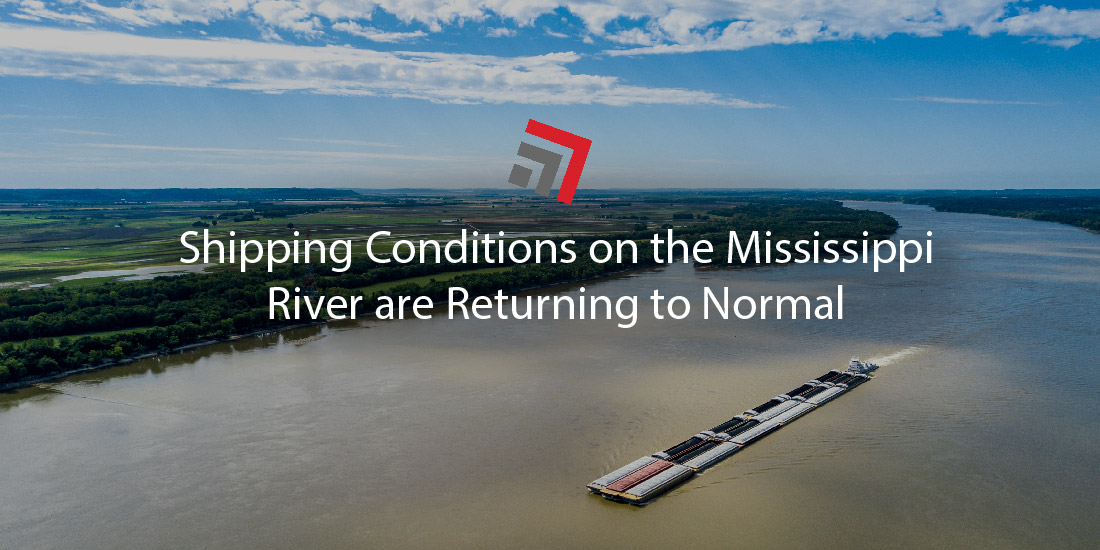The Mighty Mississippi River is the central artery of America’s waterborne trade. As the country’s postcard river, the Mississippi is comfortably one of the busiest cargo throughways as it connects our coastlines with inland hubs like St. Louis, Memphis, and even (via the Illinois River) Chicago.
Some 500 million tons of goods are moved by barge annually through the water highway. And, included in this stunning volume is more than half of all American grain exports. The river’s importance for moving agricultural commodities has led many referring to it as “the ag coast of America”.
2022 has been no exception to these usual demands from shippers to move their swarth of goods. However, what has been the exception is a crisis that no one wanted to imagine.
The worst-case scenario—the Mississippi River has been dealt a historic drought.
The Mississippi’s drought, low water levels disrupted barge service
Low water levels—the lowest reportedly in decades—have plagued the Mississippi River. Over the past few months, once flourishing expanses of river have conceded to stretches of dried and sandy wastes. Century-old sunken ships were unearthed and some of the river’s islands were accessible by foot.
This strange new world of a drought-stricken Mississippi made barge transit a lot more vulnerable. In these historic conditions, the river’s depth and width were constricted causing bottlenecks for vessel traffic.
Initial estimates do not look good. The flow of goods has been cut by 45 percent totaling a reported $20 billion in economic damages and losses. The U.S. Army Corps of Engineers adds, for every one foot of draft lost on a barge, some 6,000 bushels of soybeans are lost as well.
In 2022, the Mighty Mississippi, the ag coast of America, was a shell of its usual self.
The last drought of the Mississippi, on par with this year’s one, happened in 2012. As suspected, this also translated into deteriorating shipping conditions and costly economic losses and damages.
Drought conditions present during harvest season
The river’s drought threw a wrench into the plans of shippers, mainly ag exporters, eager to have their products moved in an appropriate timeframe. And, perhaps accredited to the bad humor of logistics gods, the prime of this devastating disruption occurred right around this year’s harvest season.
With the barge mode severely hindered, tough decisions had to be made by desperate shippers. Whether they chose to their reroute cargo, change up their typical processes, or risk sticking it out, there was little wiggle room to avoid any negative impacts.
The demand for rail and truck as alternatives surged which, in return, raised costs for these two modes. The former which has had its service suffer from lagging labor negotiations.
Simply said, of all years where it could happen, a historical drought arriving in 2022 was less than ideal.
Lower Mississippi River returning to normal shipping conditions, improving water levels
It’s never too late for good news. Even if it comes at the tail end of harvest season.
Perhaps, ag exporters engaged in a collective rain dance because regional rainfall in the region has picked up again from its previous lull.
As a result, shipping conditions on the lower Mississippi River are returning to normal as overall water levels are vastly improving
With Memphis as a reference point, the National Weather Service has charted these improvements to the Mississippi’s water levels as well as laying out a promising forecast of further replenishment to the river.
Clearly, good news for barges and shippers alike. Back in October, a closure near Memphis at one point led to a backlog of 51 vessels and 710 barges trying to head south.
Now, in December, the U.S. Coast Guard reported seeing no backups at all in the Memphis area.
Barge rates have also improved.
Just before December, downbound (south) rates for a grain barge south of St. Louis were sitting at 842.34 (expressed as a percentage of a base rate). Compare that with late October when it was 2,216,67.
Final Thoughts
It’s promising to see improvements to shipping conditions on the lower Mississippi, but we are not out of the woods yet.
Northbound up the river, there are still some problem areas. Vessel traffic remains restricted on a stretch of the Mississippi from St. Louis to Cairo, IL.
Contact one of our team members if you have any questions regarding this topic or any others in domestic logistics.
Curious about the Mississippi River’s mighty potential in trade? Click here!



Recent Comments